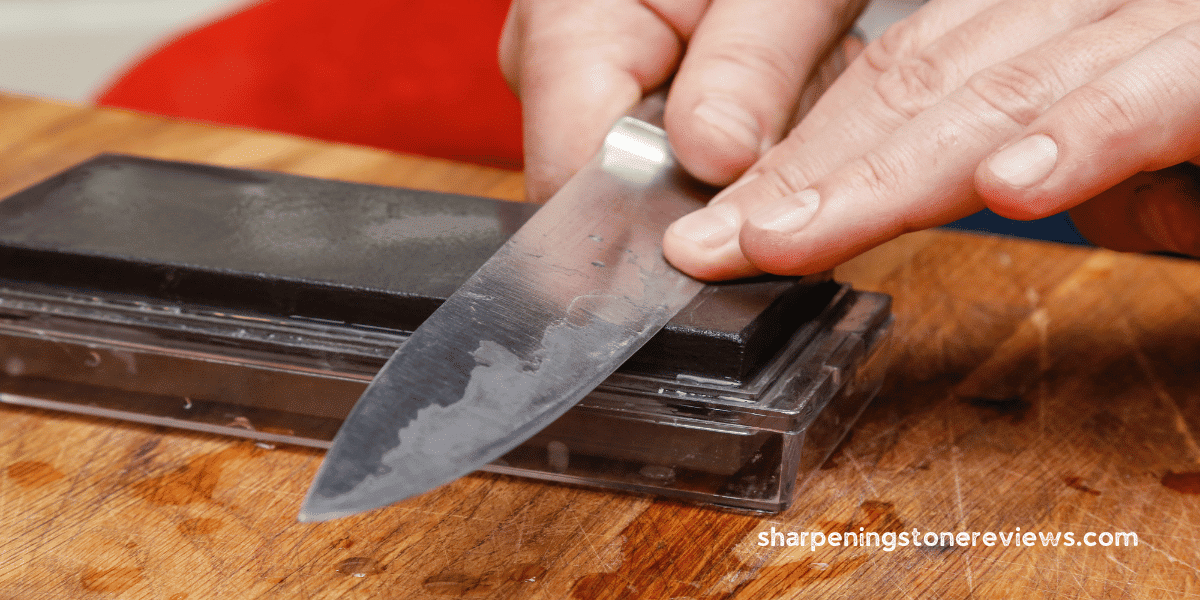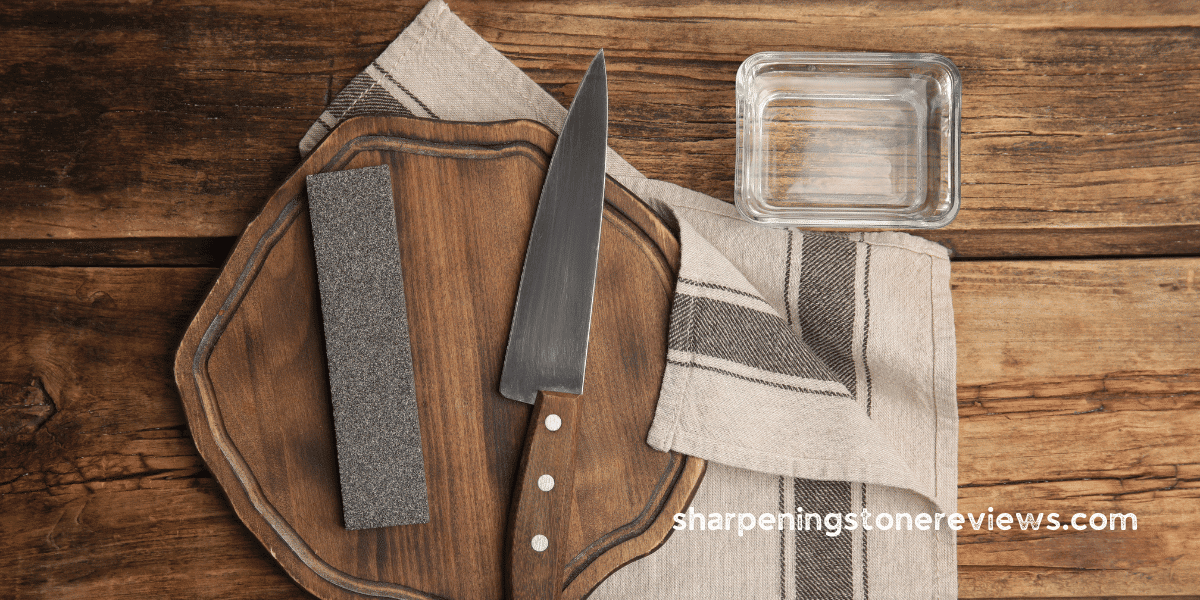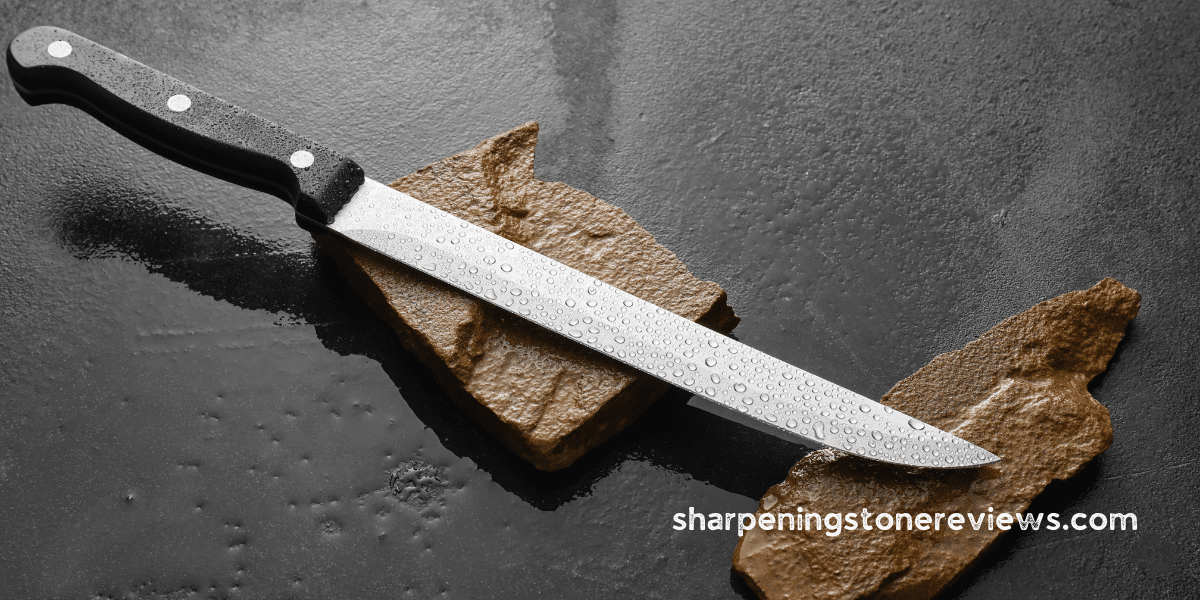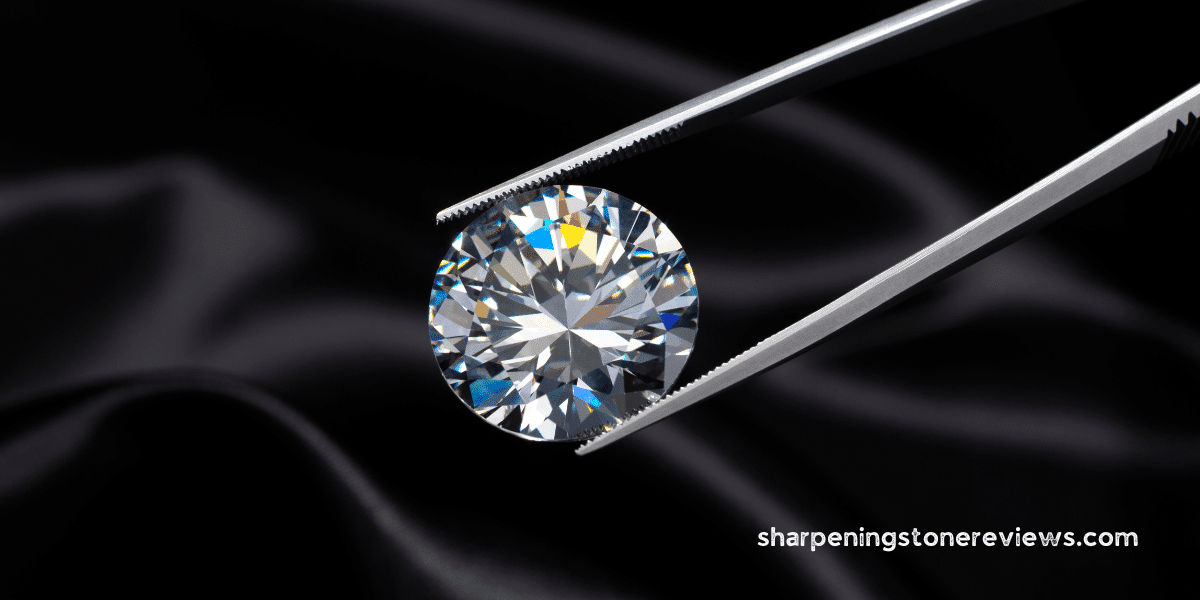Flattening a whetstone is an important part of the sharpening process. A flat whetstone ensures that you can achieve consistent and even sharpening results. When a whetstone becomes uneven or curved, it can create uneven pressure on the blade, leading to inconsistent sharpening and potentially damaging it.
To flatten a whetstone, you’ll need a few tools. The most common tool used for flattening is a flattening stone or a diamond plate. These tools are designed to remove material from the whetstone’s surface and restore its flatness. You can also use sandpaper on a flat surface, such as a piece of glass or granite, as an alternative method.
Before you start flattening, it’s essential to check if your whetstone is uneven. A straightforward way to do this is by placing a ruler or straight edge across the stone’s surface. If you see gaps or light passing through, your whetstone is not flat and needs to be flattened.
To flatten your whetstone, start by wetting the surface with water. This will help lubricate the stone and prevent excessive heat buildup. Next, take your flattening stone or diamond plate and rub it in a circular motion across the surface of the whetstone. Apply even pressure and make sure to cover the entire surface. Repeat this process until the whetstone is flat and even.
If using sandpaper, attach it to a flat surface and wet it with water. Then, apply even pressure to rub the whetstone in a circular motion on the sandpaper. Make sure to cover the entire surface of the whetstone. Repeat this process until the whetstone is flat and even.
Once you’ve flattened your whetstone, it’s essential to maintain it for long-term use. After each use, clean the whetstone with water and a brush to remove any metal particles or debris. Store it in a dry place to prevent moisture buildup, which can lead to the stone becoming uneven over time.
Flattening your whetstone is an essential step in achieving optimal sharpening results. By following these steps and regularly maintaining your whetstone, you can ensure that your blades stay sharp and in excellent condition. So, grab your tools and start flattening for better sharpening!
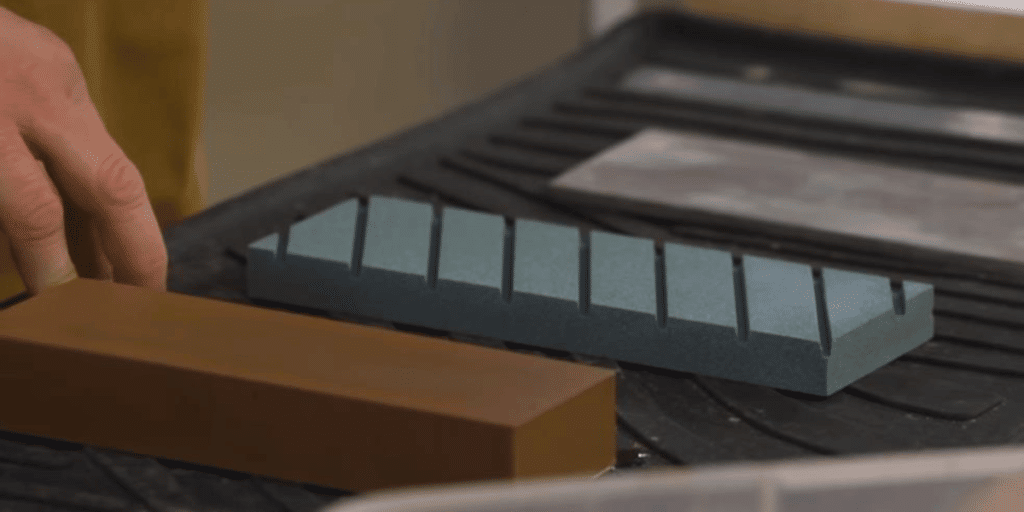
What is a Whetstone?
A whetstone is a flat, sharpening stone used to maintain knives and tools. With proper maintenance, it can last for years!
Whetstones are made from various materials, including natural stones, man-made ceramic stones, and diamond plates.
The flattening process involves applying pressure and an angle to the stone. This helps to remove burrs and metal fragments, ensuring a smooth surface. A smooth surface is essential because it allows the blade to glide evenly during sharpening. Flattening the stone is especially important for maintaining a straight edge on the knife.
Regular maintenance of the whetstone will ensure it lasts for years to come.
Why is it Important to Flatten a Whetstone?
Flattening a whetstone is essential for several reasons. Using a bumpy whetstone can make your knives duller rather than sharper. This is because the uneven surface of the stone can cause the blade to become misaligned, resulting in an ineffective sharpening process.
A flat whetstone provides a smooth surface for the blade to glide over. This smoothness allows for an even sharpening, ensuring the entire blade length is honed correctly.
To flatten a whetstone, various tools can be used. Water stones, lapping plates, or diamond plates made of silicon carbide are commonly employed. These tools are designed to remove any unevenness or imperfections from the stone
‘s surface.
Flattening a whetstone is relatively simple and requires minimal time and effort. By flattening your whetstone, you can ensure that your knives receive the best possible sharpening treatment.
In conclusion, flattening a whetstone is crucial for achieving optimal sharpening results. Creating a flat surface ensures that your knives are sharpened evenly and effectively without the risk of further dulling or damage.
What Tools Are Needed to Flatten a Whetstone?
Polishing your knives to perfection requires the right tools – investing in quality flattening equipment will save you from dullness and damage. You’ll need a whetstone, water source, whetstone holder, and flattening tool. A truing stone, flattening plate, and sandpaper are all suitable options. Silicon is great for flattening surfaces as it resists wear, making it ideal for repeated use. A ruler or paper will help you determine if the stone is flat. Shine a light behind the ruler/paper to spot any gaps. Investing in quality equipment will help you maintain flat surfaces and get those knives sharp!
How to Prepare the Whetstone for Flattening
To prepare the whetstone for flattening, follow these steps:
- Draw a grid with a pencil on the sharpening stone surface to track progress and make the process easier.
- Soak the sharpening stone in water for at least 10 minutes before beginning the flattening process. This removes debris from diamond-sharpening stones, making the stone flattening method more effective.
- Clean the whetstone sharpening surface of any dirt, oil, or metal fragments before use. Ensuring a clean and smooth flattening process is important.
- Wet the whetstone with water and ensure the surface is lubricated correctly before starting. This will aid in flattening and prevent any damage to the stone.
Remember to take your time and be patient when flattening a whetstone. On average, it takes about 20 minutes to flatten a whetstone properly.
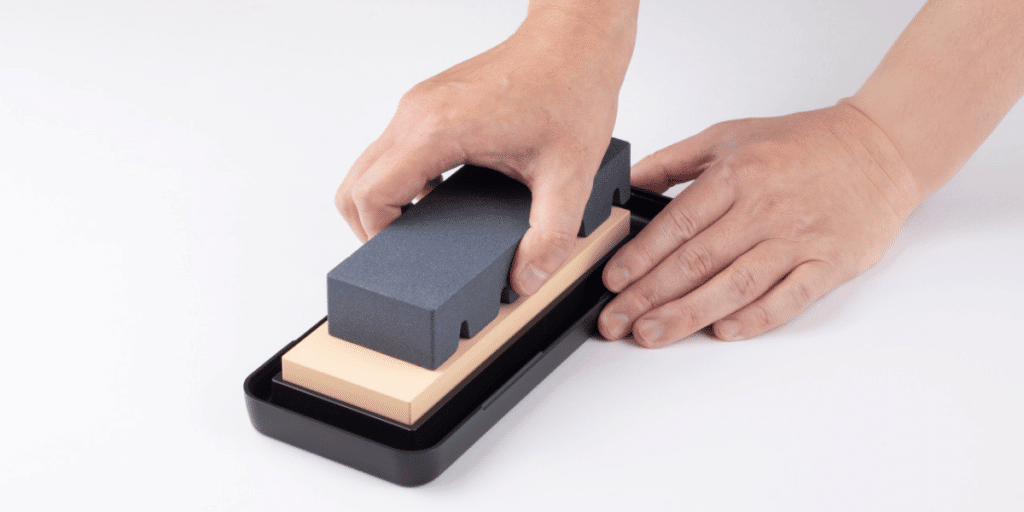
How to Flatten the Whetstone
To flatten a whetstone and ensure a smooth surface for better sharpening, follow these steps:
- Gather the necessary tools: a Waterstone, a flattening tool (such as a truing stone, flattening plate, or sandpaper), water, and a whetstone holder.
- Place the Waterstone in the holder and submerge it in water. This will prevent the stone from moving during the flattening process.
- Rub the flattening tool on the Waterstone in straight lines or circles, applying constant pressure. This will remove any high spots and level the surface of the stone.
- Track your progress by observing disappearing pencil marks on the stone. These marks can help you determine which areas still need to be flattened.
- Test for flatness by using a ruler or a piece of paper. Place the ruler or form on the Waterstone and check for gaps or unevenness. A flat surface should have no gaps or spaces.
Remember, the sharpening process can be completed successfully with the right technique and care.
How to Check if the Whetstone is Flat
Checking if your whetstone is flat is an essential step in sharpening knives effectively. Using a ruler or paper, you can quickly check whether the whetstone has dips or bumps.
Slide the ruler or paper between the whetstone and the straight edge or engineer’s square to look for gaps. Shining a light behind the ruler or paper can help expose any dips.
If gaps are found, it’s time to flatten the whetstone with a truing stone, flattening plate, or sandpaper. Each of these abrasive materials has its process, so read up on the best sharpening techniques before starting.
With the proper process, you can ensure that your whetstone is flat and ready for sharpening.
How to Maintain Your Whetstone
To maintain your whetstone and keep it in top condition, follow these steps:
- Regularly flatten the whetstone to ensure an even surface for sharpening. Wet the whetstone and apply pressure evenly and at the right angle. Use a flattening stone or plate to rub the whetstone in a circular motion. This will cause the pencil lines to disappear, indicating that the whetstone is flattening. Monitor the progress by checking for gaps with a ruler or paper.
- Once the pencil lines have disappeared, your whetstone is flat and ready for use.
- Clean the whetstone after each use to remove sharp debris from the edges. This will prevent any interference while sharpening and ensure optimal performance.
Regularly maintaining your whetstone ensures that it provides an effective sharpening surface, leading to a sharp blade every time.
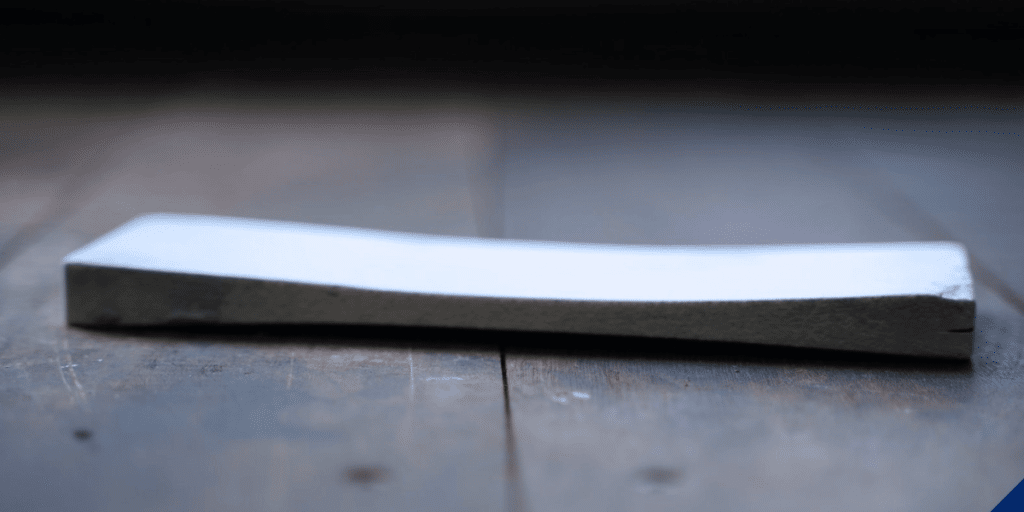
Frequently Asked Questions
How often should a whetstone be flattened?
It’s recommended to flatten your whetstone every few months. This frequency helps maintain a flat surface for even sharpening and prevents damage to your knives. Regular maintenance will ensure long-lasting sharpening performance.
Are there any alternatives to truing stone, flattening plate, or sandpaper?
To flatten a whetstone, you may use either a honing steel or a ceramic rod. Both have a flat, abrasive surface and can be used to remove bumps and metal fragments. However, they may be less effective than specialized tools like truing stones or flattening plates.
How much water should be used when flattening the whetstone?
When flattening a whetstone, use enough water to keep it lubricated. This will help reduce any friction and keep the surface even. Splashing some extra water can help you maintain the correct amount.
Is it possible to flatten a whetstone without a whetstone holder?
Yes, it is possible to flatten a whetstone without a holder. You’ll need to secure the stone on a flat surface to keep it steady while flattening. Ensure the surface is dry and the stone is wet during the process. Use a truing stone, flattening plate, or sandpaper to flatten.
Are there any safety precautions to consider when flattening a whetstone?
Sharpening a whetstone is like a balancing act – take caution to avoid slips and cuts. Wear safety goggles, gloves, and a holder to ensure a steady hand. Take frequent breaks to prevent fatigue and keep the stone flat.
